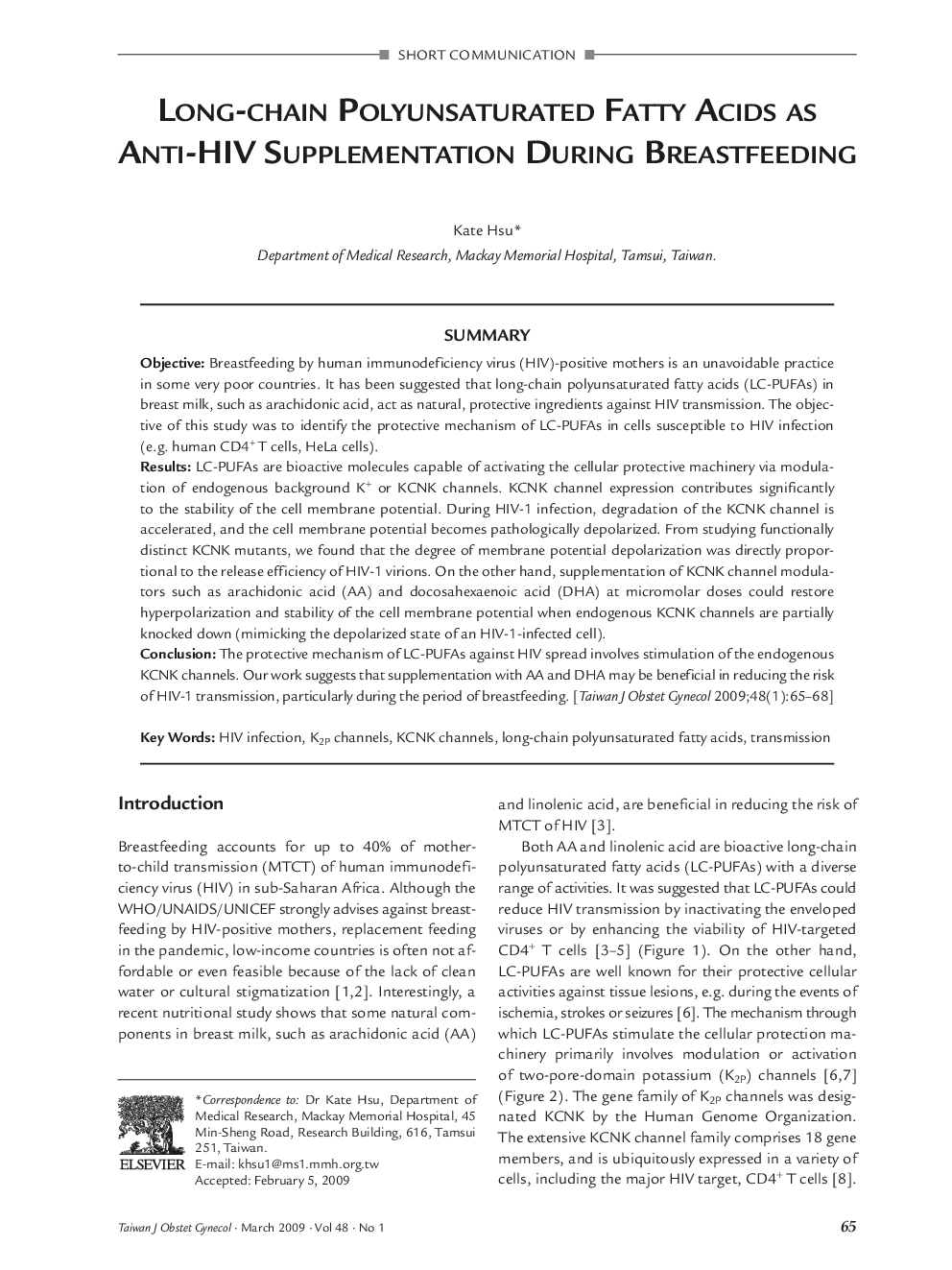| Article ID | Journal | Published Year | Pages | File Type |
|---|---|---|---|---|
| 3975828 | Taiwanese Journal of Obstetrics and Gynecology | 2009 | 4 Pages |
SummaryObjectiveBreastfeeding by human immunodeficiency virus (HIV)-positive mothers is an unavoidable practice in some very poor countries. It has been suggested that long-chain polyunsaturated fatty acids (LC-PUFAs) in breast milk, such as arachidonic acid, act as natural, protective ingredients against HIV transmission. The objective of this study was to identify the protective mechanism of LC-PUFAs in cells susceptible to HIV infection (e.g. human CD4 + T cells, HeLa cells).ResultsLC-PUFAs are bioactive molecules capable of activating the cellular protective machinery via modulation of endogenous background K + or KCNK channels. KCNK channel expression contributes significantly to the stability of the cell membrane potential. During HIV-1 infection, degradation of the KCNK channel is accelerated, and the cell membrane potential becomes pathologically depolarized. From studying functionally distinct KCNK mutants, we found that the degree of membrane potential depolarization was directly proportional to the release efficiency of HIV-1 virions. On the other hand, supplementation of KCNK channel modulators such as arachidonic acid (AA) and docosahexaenoic acid (DHA) at micromolar doses could restore hyperpolarization and stability of the cell membrane potential when endogenous KCNK channels are partially knocked down (mimicking the depolarized state of an HIV-1-infected cell).ConclusionThe protective mechanism of LC-PUFAs against HIV spread involves stimulation of the endogenous KCNK channels. Our work suggests that supplementation with AA and DHA may be beneficial in reducing the risk of HIV-1 transmission, particularly during the period of breastfeeding.
